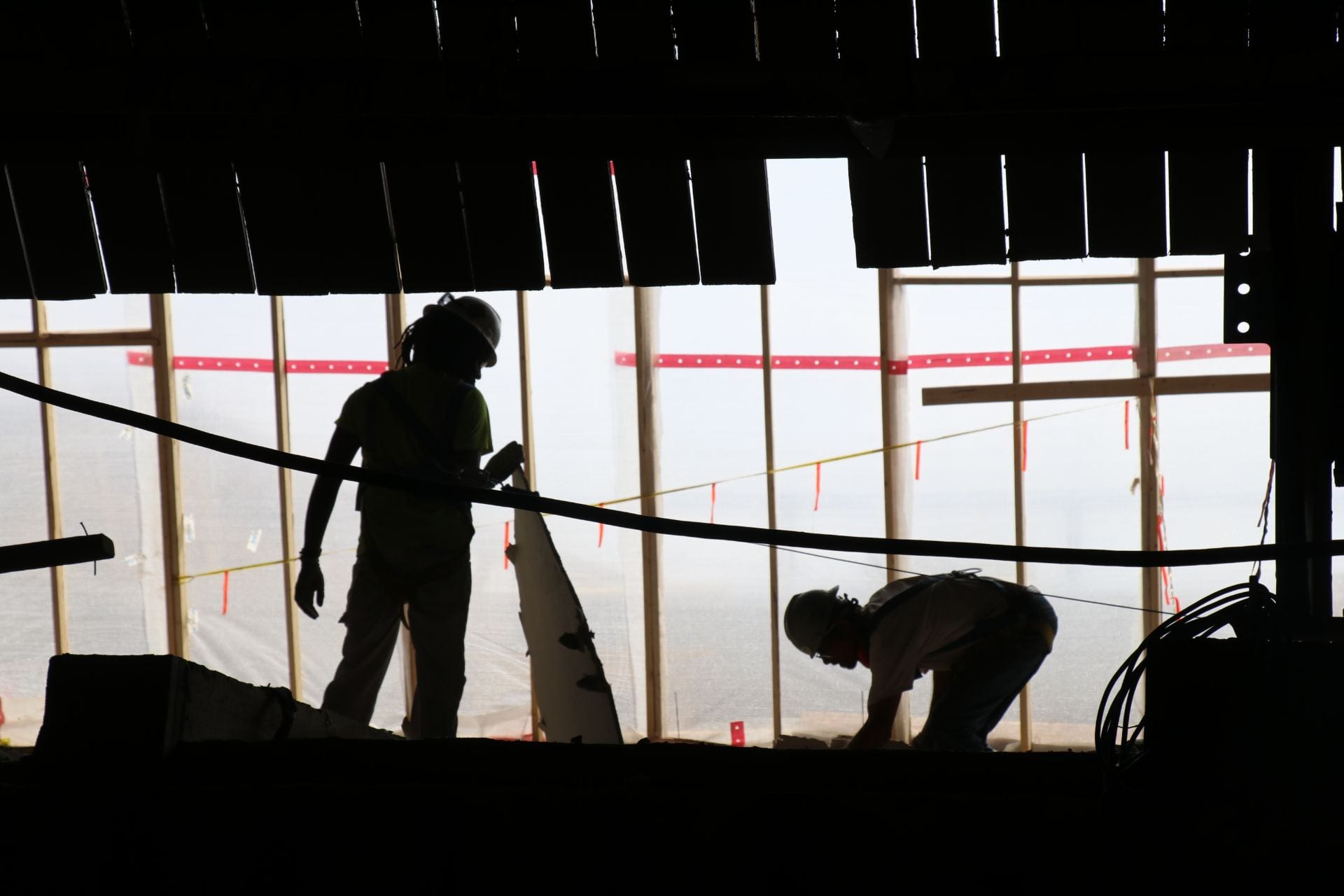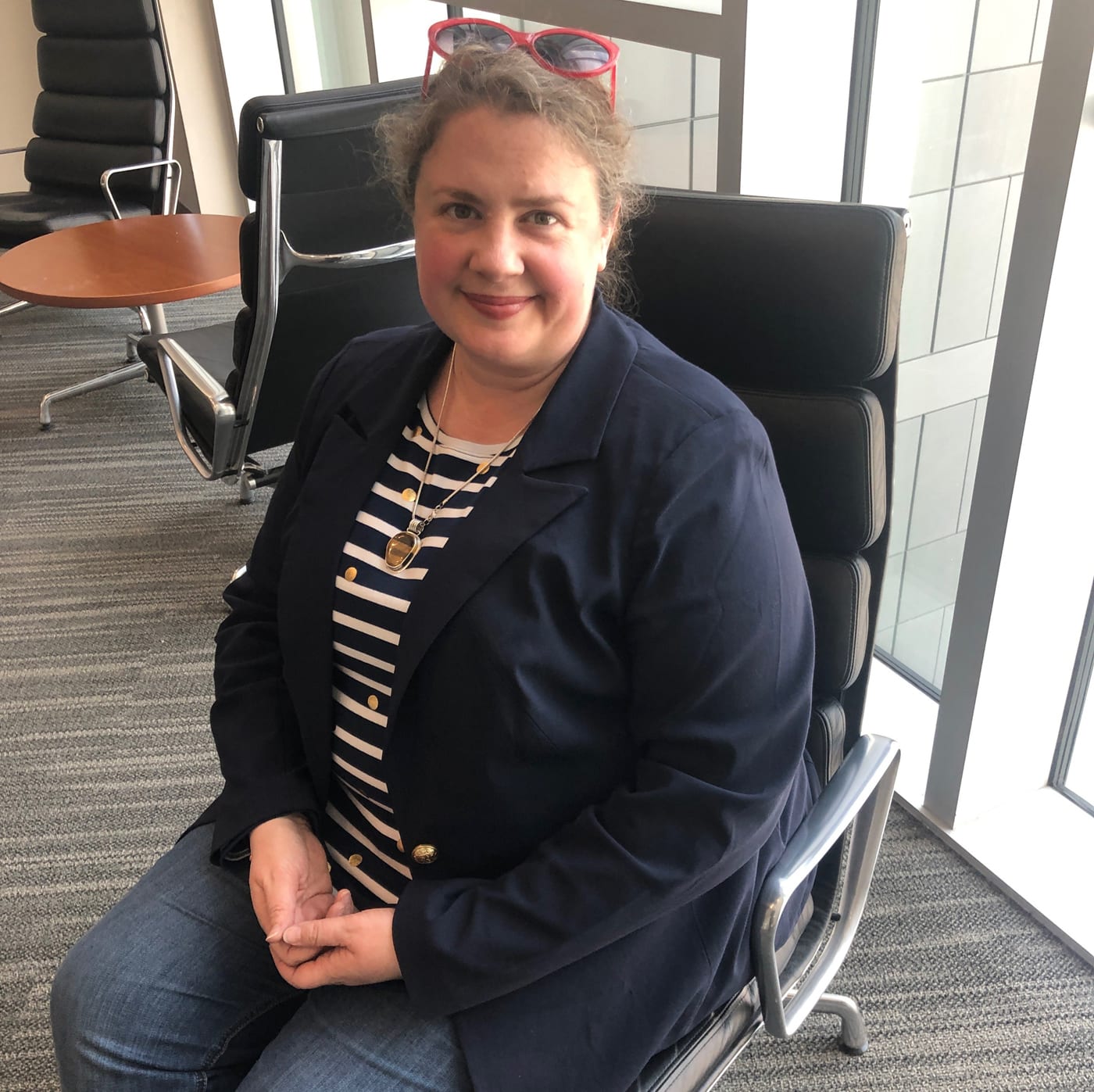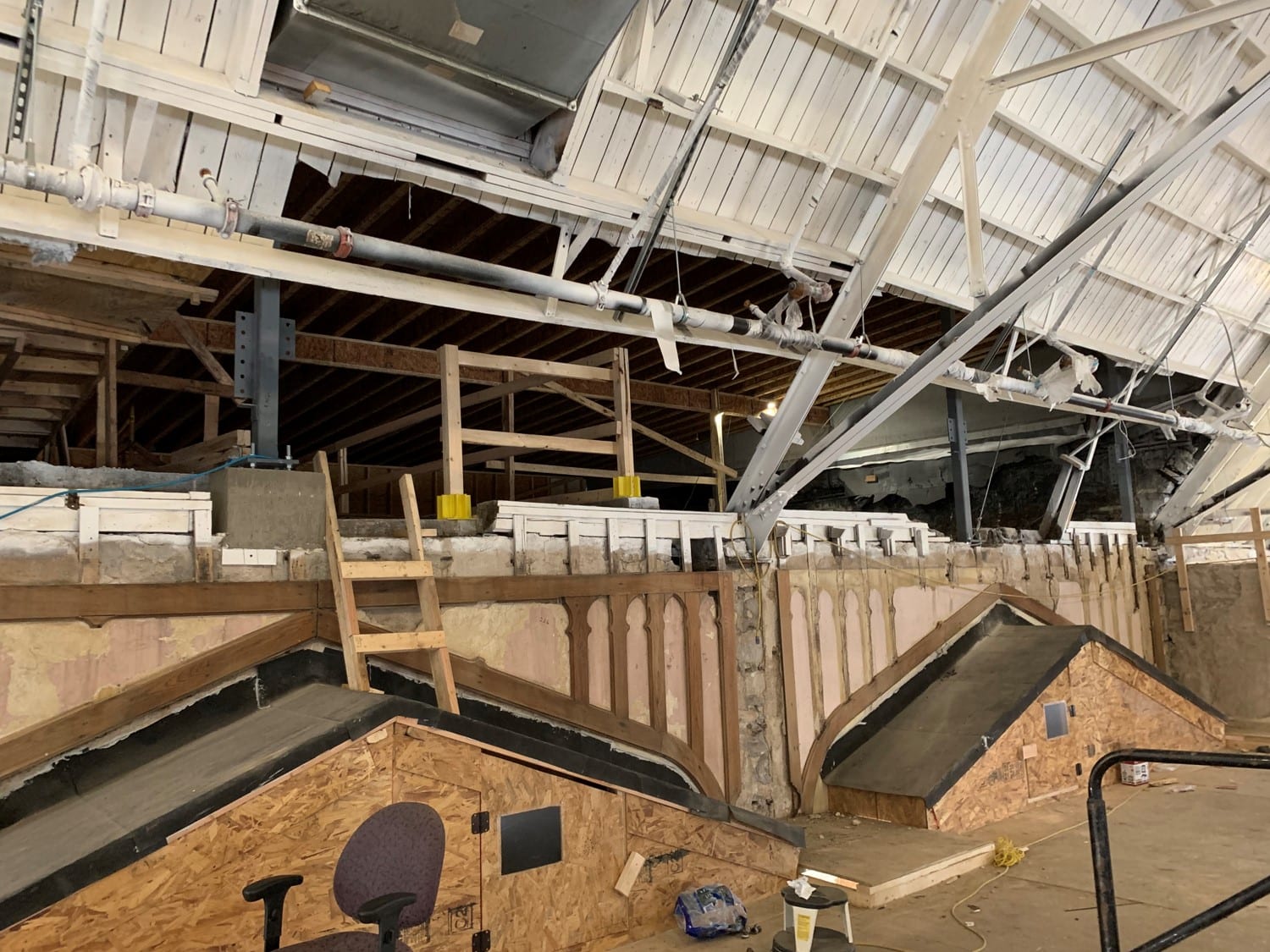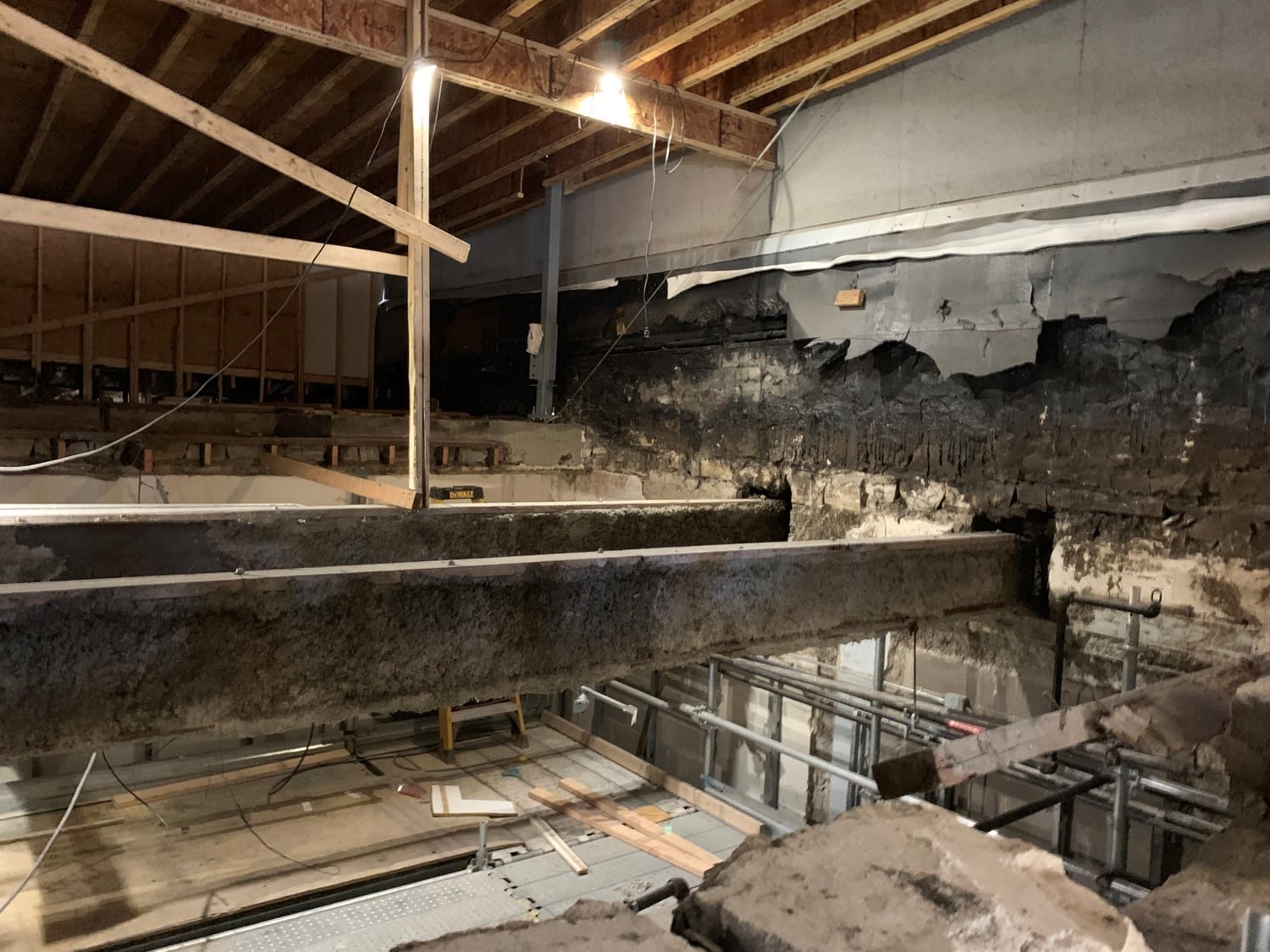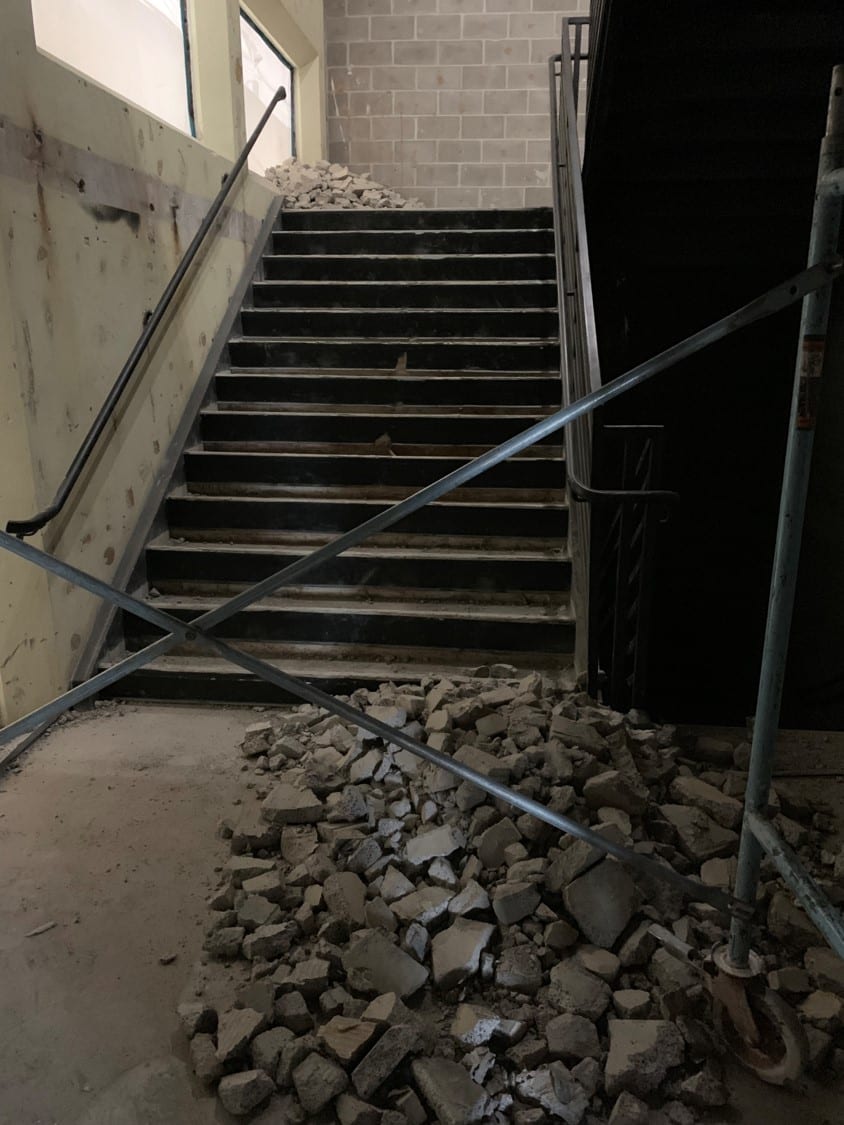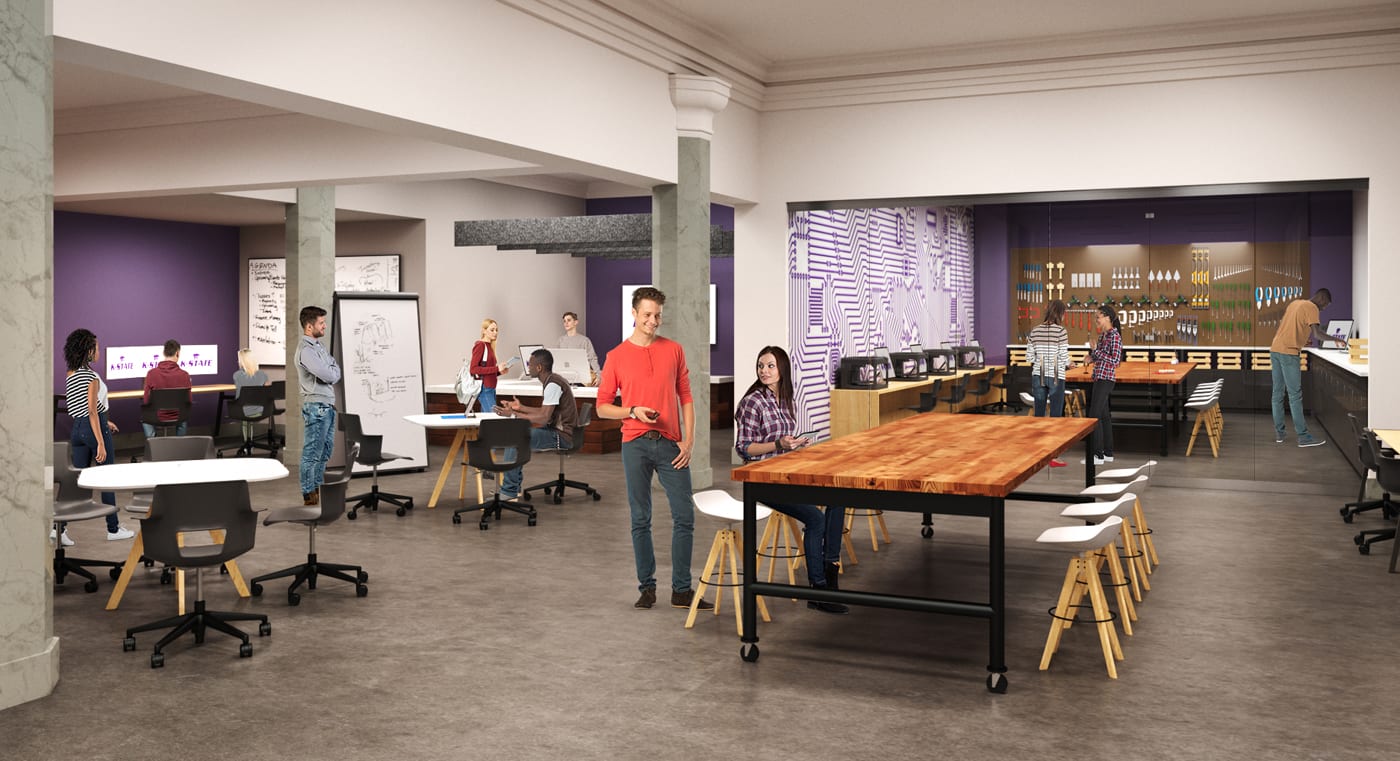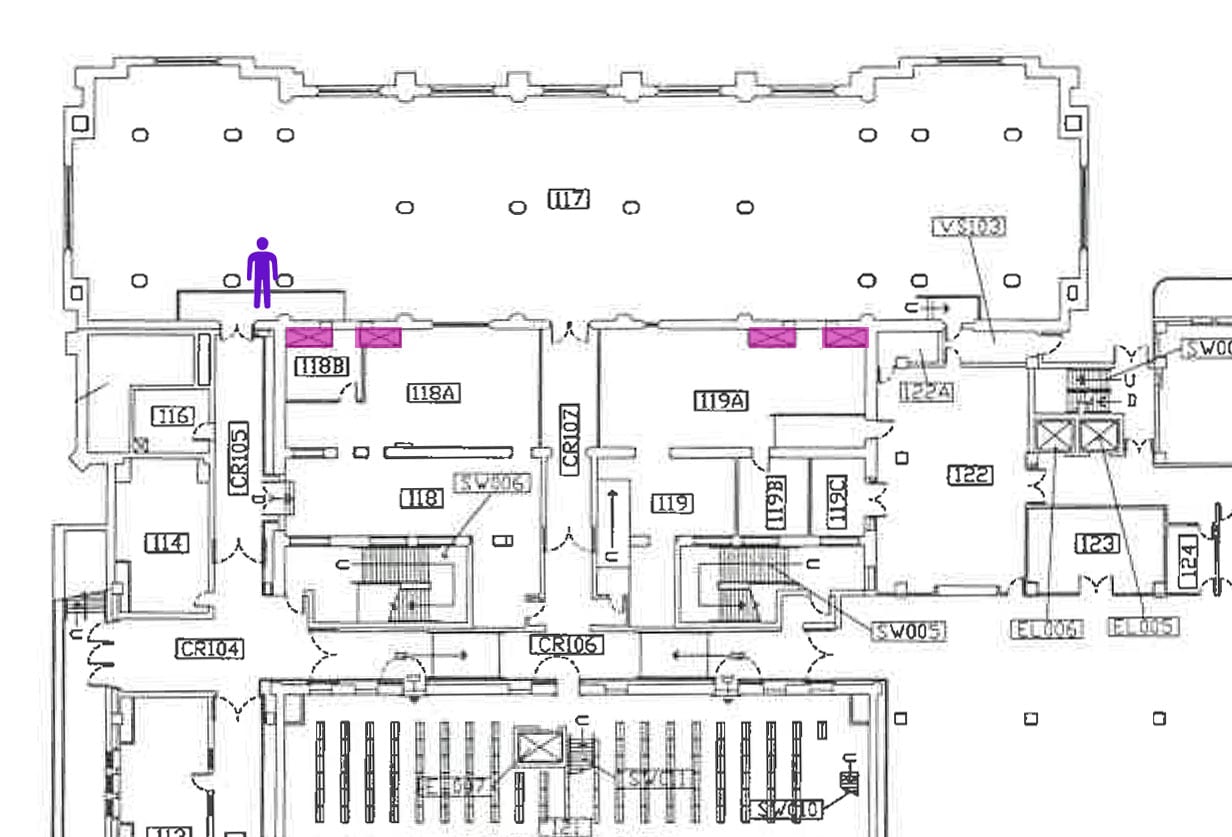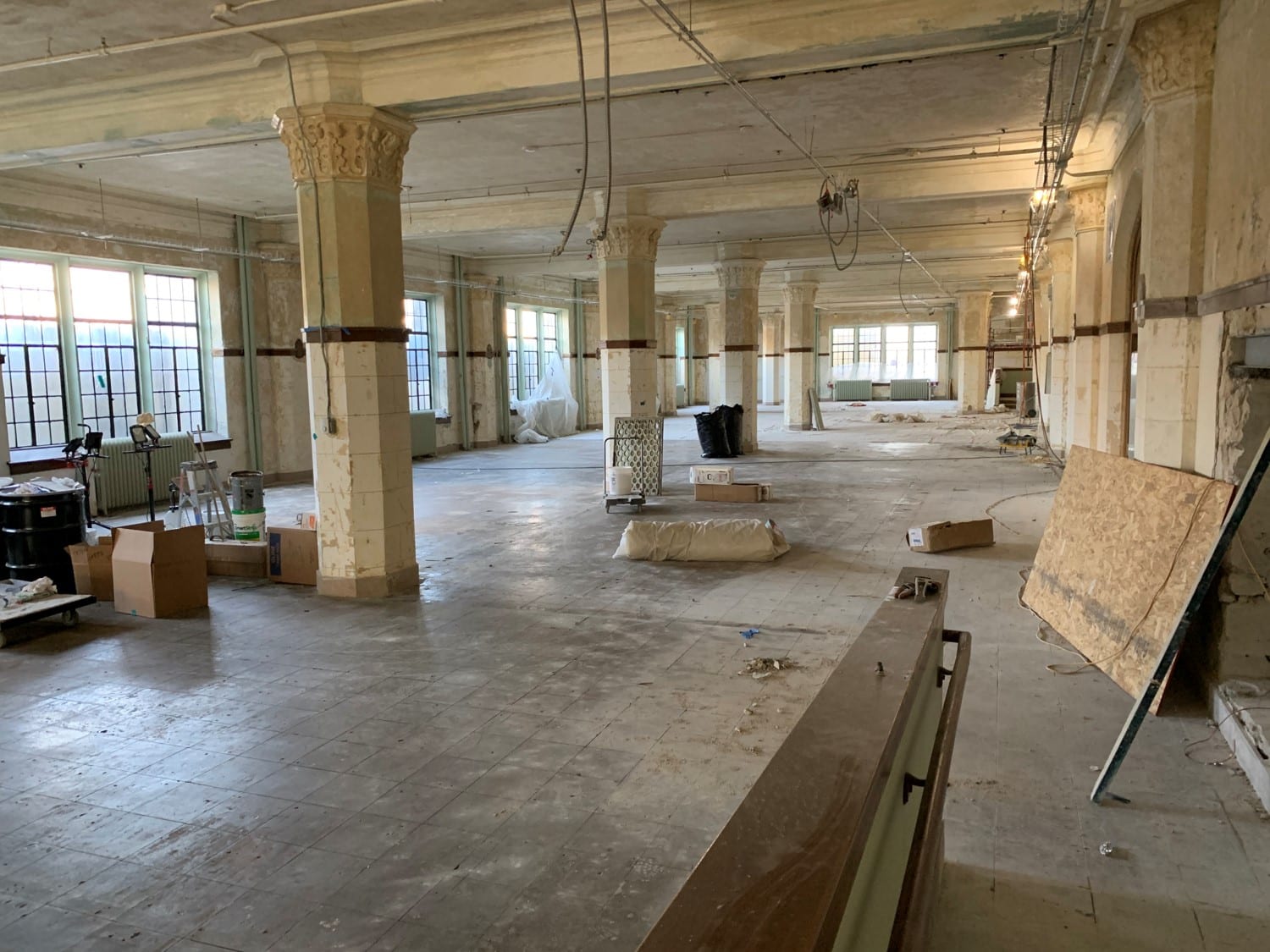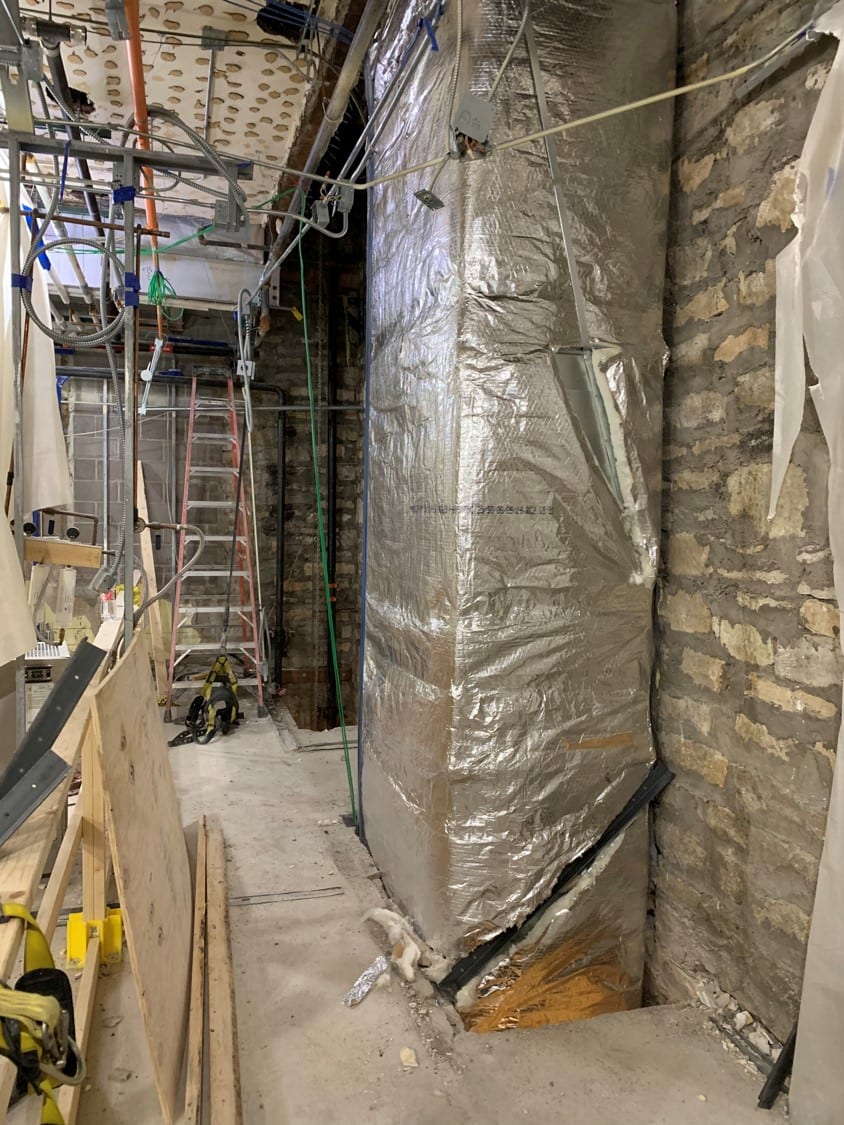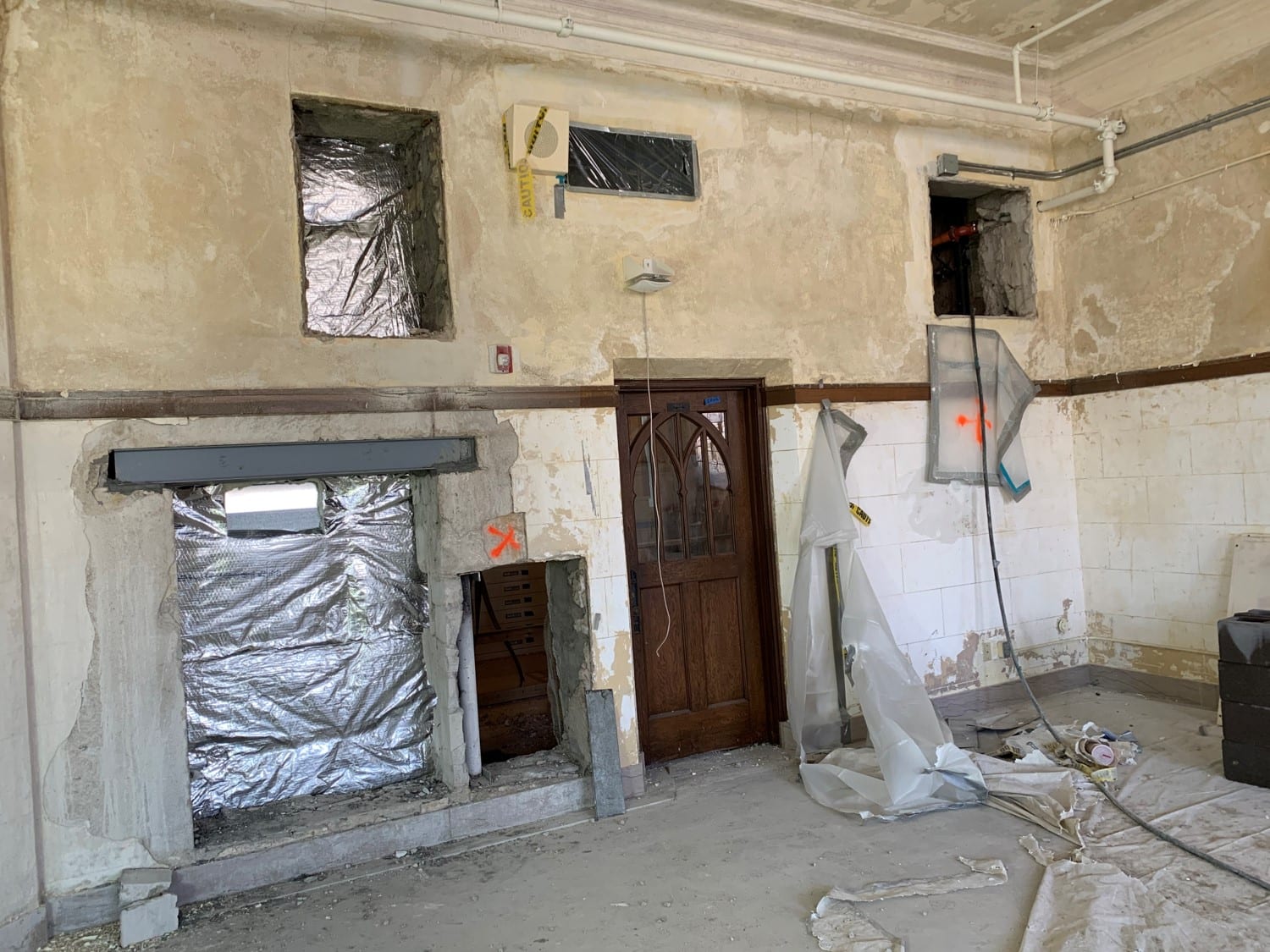Demolition and construction are in full swing in Hale Library!
When we visited on Monday, March 26, more than 60 workers swarmed through the building.
On the first floor, they were stripping out drywall and tearing down walls in preparation for the creation of the Dave & Ellie Everitt Learning Commons, opening Fall 2019.
One feature of the Learning Commons? Improved access! If you’ve visited Hale Library, you know it has two exterior entrances: One at the end of a long ramp that originates at the southwest corner and one at the opposite end of the building near Mid-Campus Drive. The latter is called the sunflower entrance because of the wrought-iron sunflower sculpture above its doors.
Previously, when a visitor used the sunflower entrance, they came inside and encountered a wall of windows that blocked their access to the first floor. Instead, they had to climb the stairs or take an elevator to the second floor in order to enter through the main gates. Another trip down the stairs or the elevator was required to get back down to the first floor.
Unsurprisingly, this configuration baffled Hale Library’s visitors and first-time users (and frankly, even K-Staters who have been around for awhile).

But no more! This week, the wall came down. When Hale Library’s first floor reopens in fall 2019, visitors will walk through the sunflower entrance directly into the Dave & Ellie Everitt Learning Commons on Hale Library’s first floor.
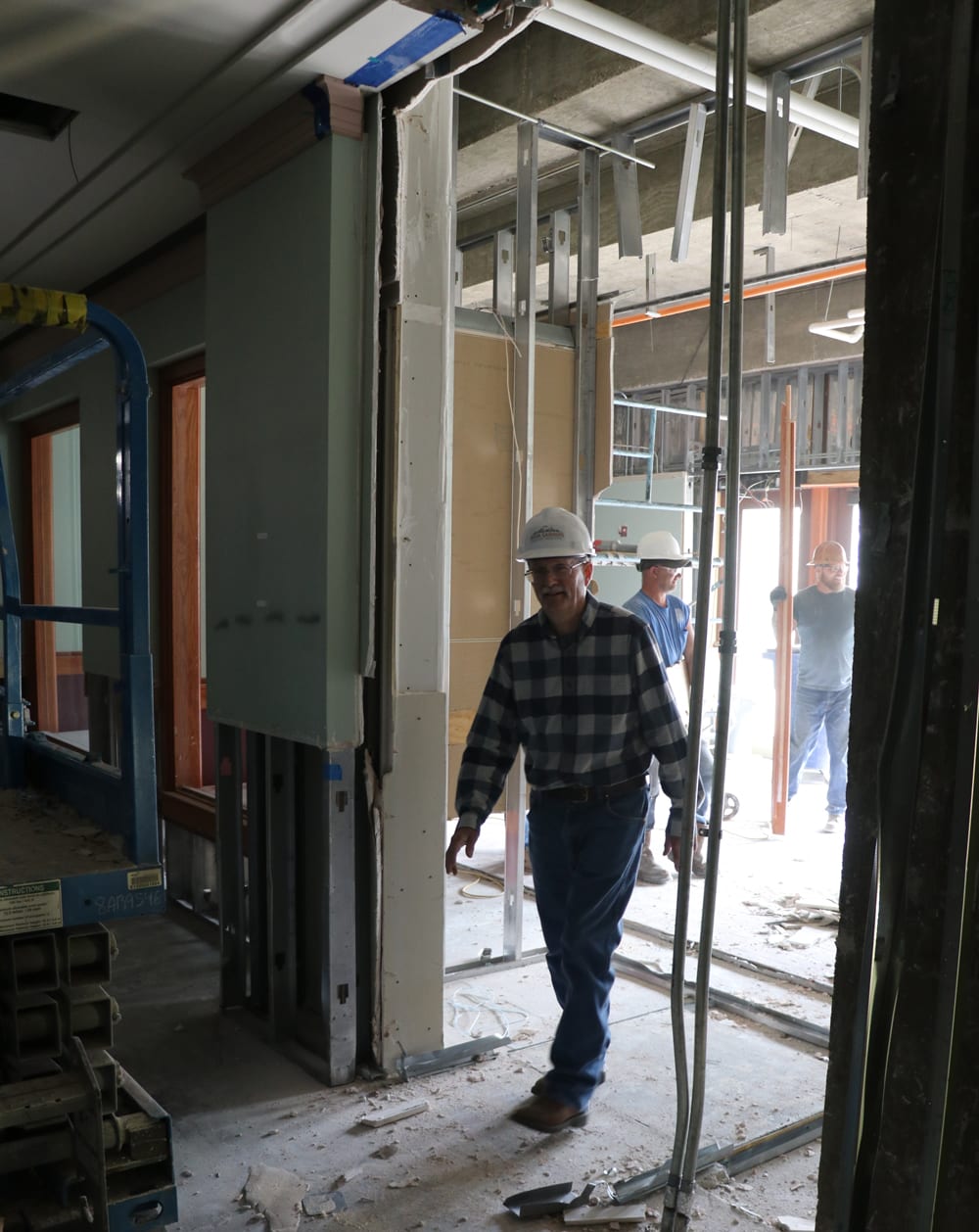
Progress!
Meanwhile, on the third floor, workers are installing new duct work in the Great Room ceiling.


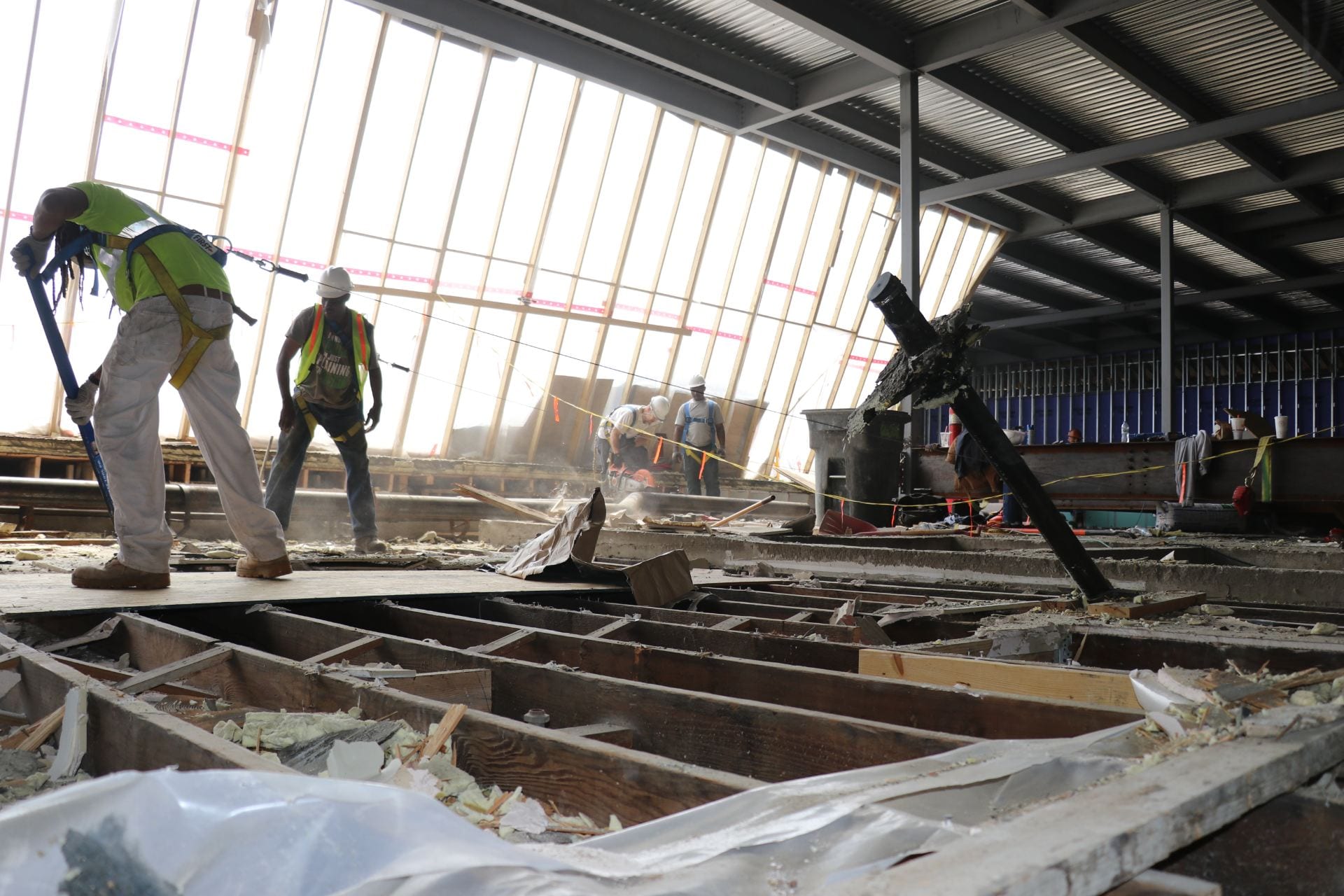
Outside, on the north side of the building, scaffolding is going up in preparation for an imminent roofing project.
A crane is parked nearby on the south edge of the quad. It is maneuvering steel beams from the roof into a space above the fourth floor Academic Learning Center where the fire started.
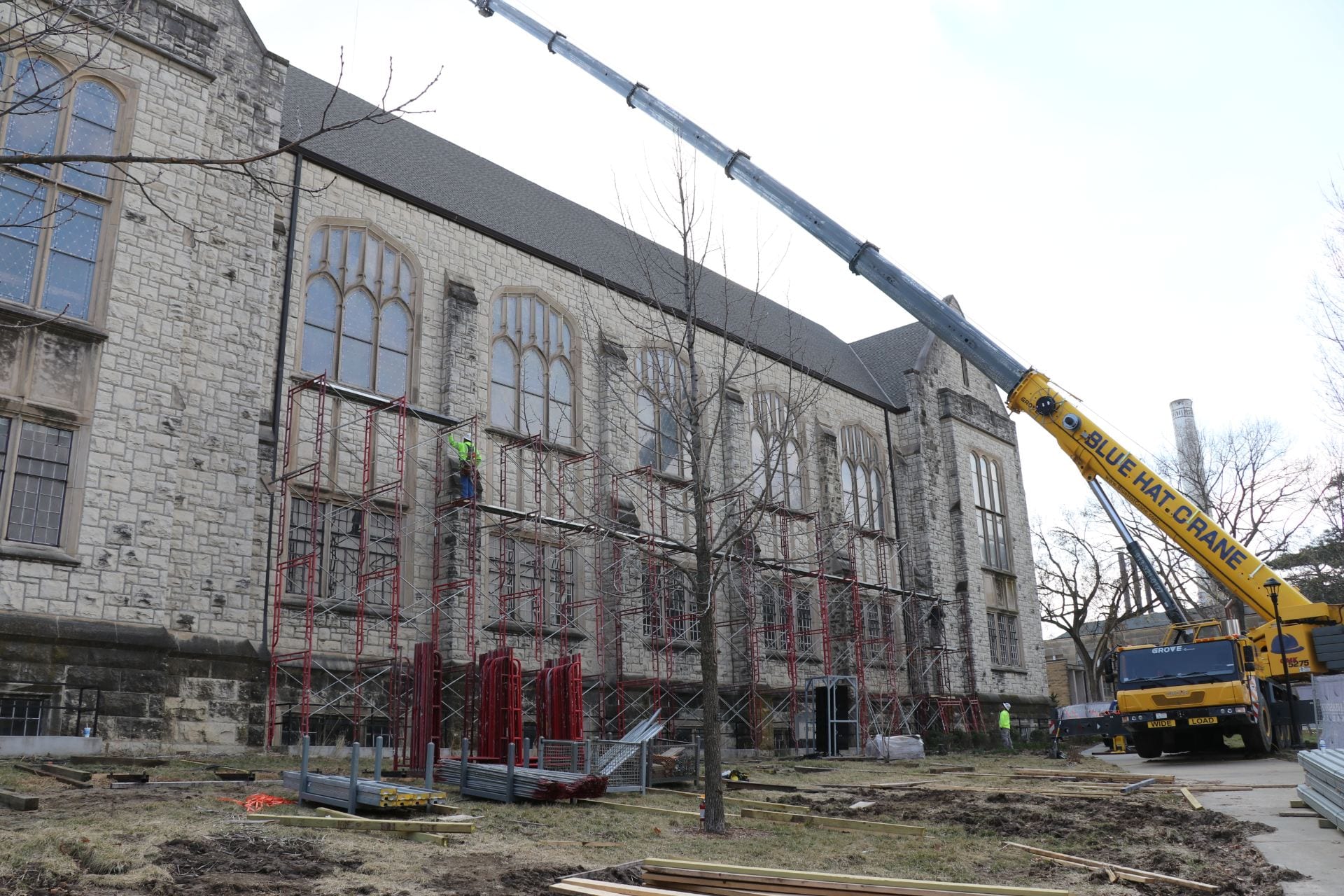

Since the crane operator on the ground can’t see over the building, the workers rely on communication via wireless radio to complete every step of the process.

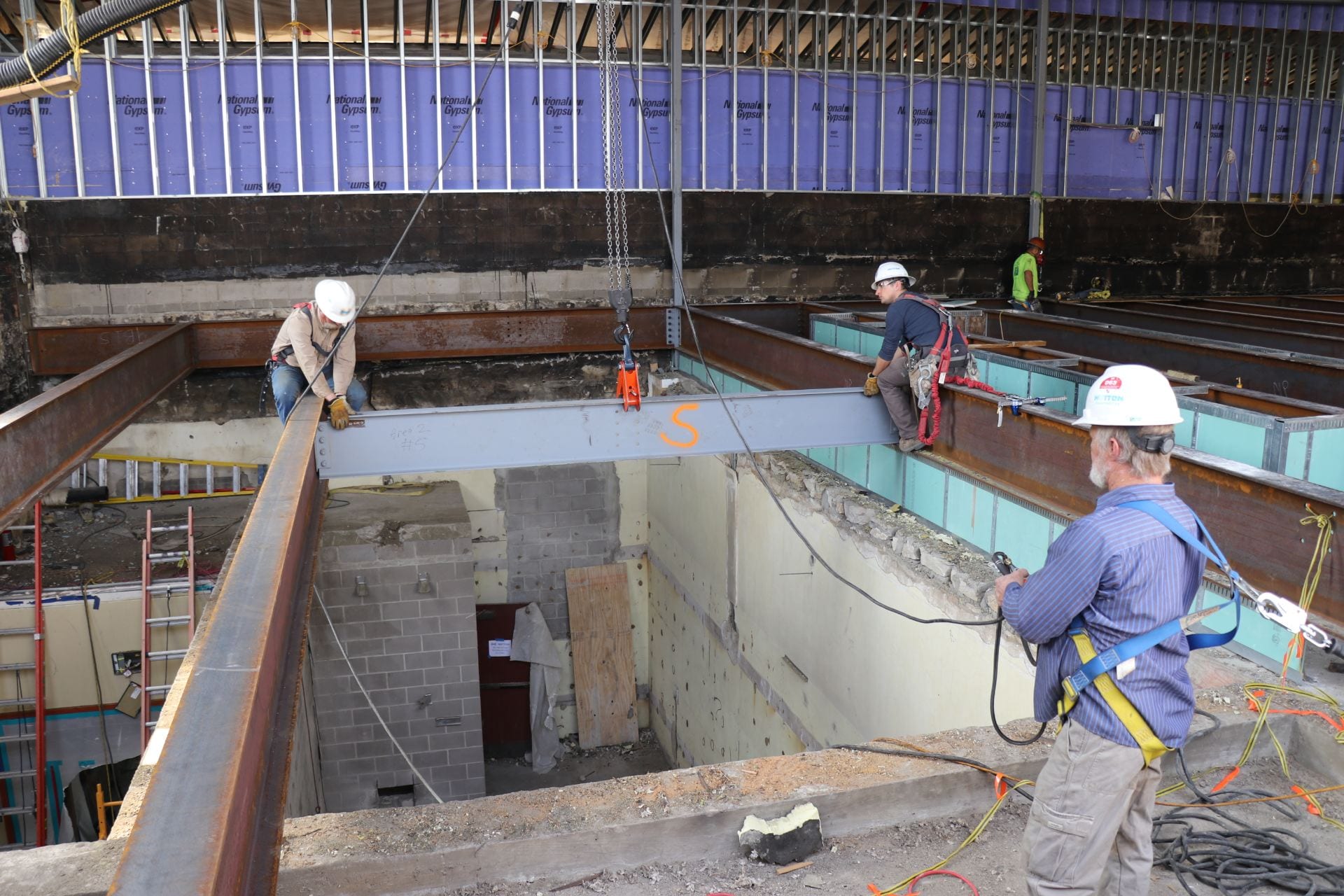

From the outside, Hale Library appears quiet and empty. On the inside, it’s a different scene entirely. We look forward to bringing you more construction updates in the coming weeks.
